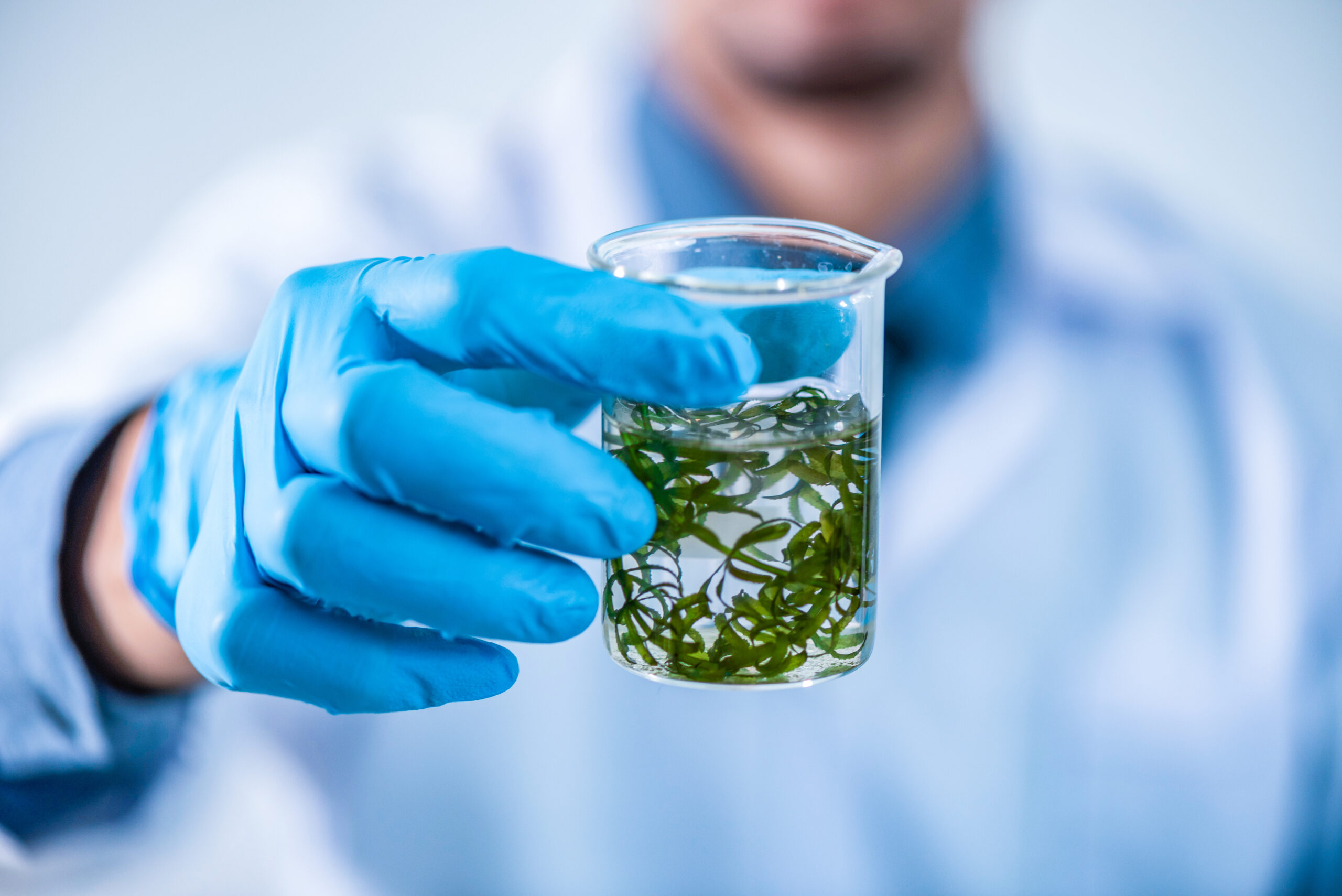
21.09.2024
CLIMIT; Researching CO₂ Capture with Microalgae
In response to climate change and the growing need for sustainable solutions, a new Norwegian project aims to develop innovative technology for CO2 capture using microalgae.
The Microalgae project is supported by CLIMIT with NOK 286,000, and led by Fredrik Mood from the company Mood Harvest.
The project involves a team of researchers and engineers working to develop and validate a photobioreactor specifically designed for the Nordic climate. This technology is intended to optimize the cultivation of microalgae, while contributing to the reduction of greenhouse gases in the atmosphere and producing climate-friendly raw materials and products.

Background and Objectives
The project’s primary goal is twofold. Firstly, the project team aims to clarify the potential of the business concept behind the photobioreactor. This will provide a solid foundation for making strategic decisions that can promote further development of the technology. Secondly, the project seeks to validate CO2 storage potential of microalgae, which could have significant implications for future climate efforts. The work is conducted in close collaboration with academic institutions to ensure that the technology is both scientifically grounded, and practically applicable in an industrial context.
– The photobioreactor is central to the project and is currently under patenting. The reactor is specifically adapted to the challenging light and temperature conditions characteristic of the Nordic climate, with significant variations throughout the year. By utilizing locally captured CO2 and artificial light to facilitate photosynthesis, the reactor enables industrial-scale cultivation of large quantities of microalgae, says Fredrik Mood.
Microalgae can either be used directly in various products or processed into raw materials, for the production of climate-positive or climate-neutral products. By integrating microalgae into production processes, the project can directly contribute to reducing the amount of CO2 in the atmosphere.
Technological Innovation and Circular Economy
The business concept behind the photobioreactor is rooted in the principles of the circular economy. This involves maximizing resource utilization and minimizing waste. The project envisions several potential revenue streams, including income from the reception and utilization of CO2, as well as the sale of raw materials and climate-neutral products. These products could range from biofuels and building materials to dietary supplements, cosmetics, and animal feed. By using CO2 as a resource rather than treating it as waste, the project helps to develop a more sustainable economy.
The photobioreactor under development stands out from existing technologies in several ways. It is designed to be industrially scalable, and requires less space than current solutions for microalgae cultivation, making it possible to grow microalgae on a large scale – even under challenging climatic conditions. The reactor is equipped with an innovative system for light and nutrient supply, along with other features which contribute to the optimal cultivation of microalgae.
One of the unique characteristics of the photobioreactor is its ability to continuously harvest microalgae. This reduces the need to shut down the reactor during harvesting, making production more efficient and potentially lowering the cost per kilogram of microalgae produced. The technology provides better control over environmental conditions inside the reactor, which is crucial for ensuring stable growth and high productivity. By integrating this technology into industry, a solution can be achieved that both reduces the carbon footprint, and increases the availability of climate-friendly raw materials.
Target Audience and Market Demand
The technology primarily targets small and medium-sized enterprises (SMEs) that are focused on reducing their carbon footprint and actively participating in the green transition. These businesses may have varying needs related to CO2 management. Some may seek to reduce their CO2 emissions through carbon capture, while others may see value in purchasing climate-neutral raw materials or products. For these companies, the photobioreactor could offer a solution that both reduces their carbon footprint, and enhances their competitiveness by ensuring access to locally sourced, climate-neutral raw materials.
The demand for climate-neutral raw materials is increasing, driven by stricter regulatory requirements and growing consumer demand for sustainability. The project highlights that access to locally produced climate-neutral raw materials will become an increasingly important factor in the coming years. The photobioreactor technology could play a central role in meeting this demand, by offering a scalable and sustainable solution for the production of such raw materials.
Challenges and Future Opportunities
– Although the project has significant ambitions, it also faces considerable challenges. Costs associated with the production and processing of microalgae have so far been a major barrier to commercial exploitation. To succeed, the project team must find ways to reduce these costs. The risk of contamination and challenges related to scaling up are also factors that need to be addressed to ensure success, says senior advisor Ernst Petter Axelsen of Gassnova.
The project team is aware of the importance of collaborating with other stakeholders, both in industry and academia, to overcome these challenges. A key part of the project’s future plan is to build a small-scale lab pilot in collaboration with research institutes such as NIBIO and SINTEF. This will provide opportunity to test and validate the photobioreactor technology under controlled conditions, and collect data as a basis for further scaling and commercialization. Accurate data collection through the pilot project is essential to validate estimates and improve the technology.
In addition, the project team sees many opportunities for future growth. Increasing demand for sustainable products, combined with technological advancements in biotechnology, provides grounds for optimism. Political support in the form of subsidies and regulations that promote renewable energy and carbon reduction, may also help create favourable market conditions for microalgae-based solutions. The project is also considering the possibility of using microalgae as an additive in concrete, which could reduce the need for cement and thus lower CO2 emissions from the construction sector.
The Way Forward
The project has already made significant progress, and initial studies confirm that microalgae cultivation can be an effective method for CO2 utilization and storage. However, further testing and development are necessary to fully achieve the original goals.
In the upcoming phase of the project, the aim is to demonstrate how the photobioreactor functions, with the goal of gathering better data and establishing a solid decision-making basis. This includes building a small-scale pilot/lab pilot and conducting experiments in collaboration with research institutions to validate the technology, in conjunction with various microalgae strains.
In parallel, the project will also explore opportunities to develop profitable carbon capture facilities tailored to small and medium-sized businesses in Norway. This includes feasibility studies for CO2 logistics for inland industries, which could form the basis for further development of full-scale demonstrators. In the long term, the goal is to build a full-scale demonstrator in collaboration with industrial stakeholders, which could contribute to realizing the technology on a large scale.
The project also plans to expand collaboration with academia and industry to develop new sustainable products from microalgae, with a particular focus on long-term CO2 storage and carbon reuse. With ambitious plans, the project points to a future where microalgae could play a key role in reducing greenhouse gas emissions, and contributing to a more sustainable economy.
